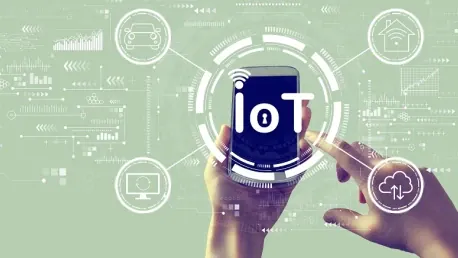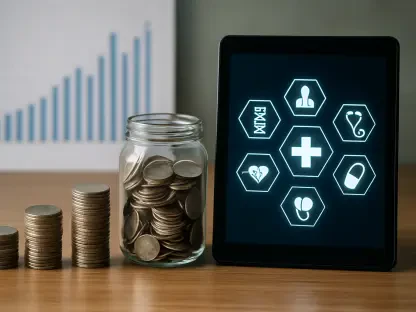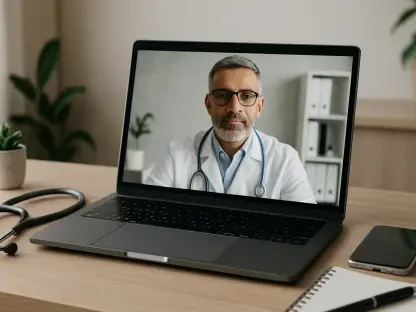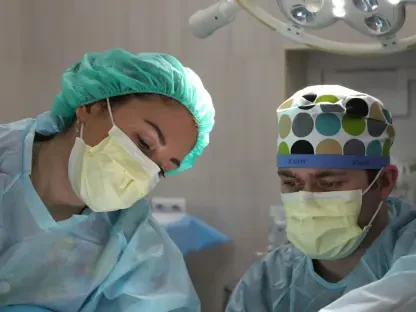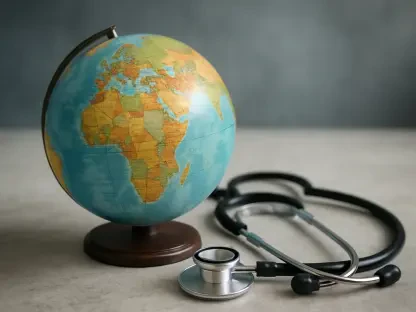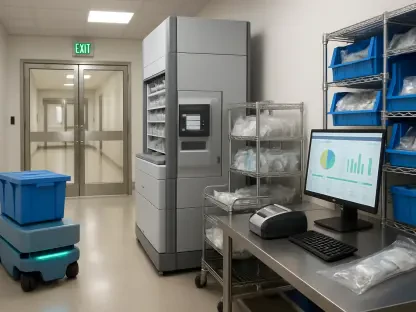Workplace violence is a growing concern in healthcare settings, where the stakes are extraordinarily high, necessitating innovative solutions to ensure employee safety. In response, Northeast Georgia Health System has implemented real-time location services (RTLS) and Internet of Things (IoT) technologies aimed at creating safer environments for healthcare workers. The adoption of these advanced technologies has proven essential, providing a cutting-edge approach to preventing and responding to incidents of workplace violence and significantly enhancing the overall sense of security among healthcare staff.
The Role of RTLS and IoT in Ensuring Safety
Northeast Georgia Health System has pioneered the use of real-time location services (RTLS) and the Internet of Things (IoT) to tackle the pressing issue of workplace violence. RTLS, specifically, focuses on tracking the exact location of staff members, enabling rapid responses in emergencies. Healthcare employees now wear RTLS badges, which send immediate alerts if they find themselves in a threatening situation.
Chris Paravate, the Chief Information Officer of Northeast Georgia Health System, emphasizes that the integration of these technologies is a game-changer. The RTLS badges work seamlessly with IoT systems, offering real-time data feeds that provide accurate location information. This synergy ensures that security personnel can respond quickly to any incidents, drastically reducing response times.
In high-threat scenarios, the ability to respond quickly can be the difference between life and death. The instant alert system provided by RTLS badges brings unprecedented peace of mind to healthcare professionals, allowing them to concentrate more fully on patient care without the constant fear of personal harm. These technologies represent a transformative step in protecting healthcare workers effectively.
Practical Applications and Success Stories
The implementation of RTLS and IoT technologies has already borne fruit through various success stories at Northeast Georgia Health System. These advanced systems have been rigorously tested and have proven their worth in several high-stress situations. For example, an emergency alert from an RTLS badge allowed security officers to intervene in a potentially dangerous situation within seconds.
Moreover, Paravate shares that these RTLS badges are not just limited to individual use but can also be integrated into fixed call buttons located throughout the healthcare facility. This comprehensive coverage ensures that staff can summon help from multiple locations, thereby enhancing the overall efficacy of the system.
Staff members have reported feeling significantly safer, thanks to these enhancements. The seamless integration into daily operations means that RTLS badges have become a natural part of the workflow, minimizing any disruption while maximizing safety. Such positive feedback underlines the practicality and effectiveness of these technological advancements.
Broader Trends in Healthcare Safety Technology
The deployment of RTLS and IoT technologies at Northeast Georgia Health System is part of a larger trend in the healthcare industry, where advanced technologies are being increasingly used to ensure the safety of both patients and staff. Artificial intelligence (AI) and machine learning are gaining traction for their ability to predict and prevent incidents of violence by analyzing behavior patterns.
Machine learning algorithms can sift through extensive data to identify potential threats before they escalate. This preemptive capability gives healthcare organizations a proactive approach to safety, complementing the reactive measures provided by RTLS and IoT technologies. For instance, AI can analyze data from wearable devices to identify stressors or changes in social interactions that could indicate a heightened risk of violence.
Cybersecurity also plays a crucial role in these systems, ensuring that the real-time data being collected is protected from unauthorized access. As healthcare institutions adopt more IoT devices, the importance of safeguarding these networks becomes paramount, making cybersecurity a critical component in the overall safety strategy. This multi-faceted approach highlights the evolving nature of safety measures in modern healthcare settings.
Integrating Safety with Efficiency
One of the standout benefits of implementing RTLS and IoT technologies is the boost in operational efficiency that comes along with improved safety. These systems not only protect healthcare workers but also streamline various aspects of healthcare delivery. For example, RTLS can track medical equipment, ensuring that critical devices are always in the right place at the right time.
By reducing response times during emergencies and optimizing the daily workflow, healthcare facilities can achieve higher levels of efficiency. This integration of safety and efficiency demonstrates the multifaceted value of advanced technology in healthcare, making a compelling case for its widespread adoption.
In addition, real-time data utilization helps in making quick and informed decisions, benefiting not only safety protocols but also patient care. Quick decision-making enabled by these technologies translates to better outcomes for patients, achieving a dual objective of enhanced safety and improved healthcare delivery. The synchronization of safety and efficiency thus offers a comprehensive advantage to healthcare systems.
Expanding the Scope and Scalability
Workplace violence is a mounting issue in healthcare environments, where the implications of such incidents can be dire. To address this, Northeast Georgia Health System has turned to innovative measures by integrating real-time location services (RTLS) and Internet of Things (IoT) technologies. These advanced technologies play a critical role in fostering a safer atmosphere for healthcare workers. The implementation of RTLS and IoT not only helps in promptly addressing and mitigating incidents of workplace violence but also significantly boosts the overall feeling of security among healthcare staff. By leveraging these cutting-edge tools, the health system is taking proactive steps to protect its employees, thereby ensuring a focus on patient care without the looming fear of violence. The use of these advanced technologies acts as a preventive measure and provides quick response capabilities, underscoring the commitment to creating a secure and supportive work environment for all staff members. This forward-thinking approach is essential in today’s high-stakes healthcare settings, where the safety and well-being of employees are paramount.
